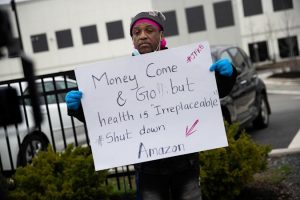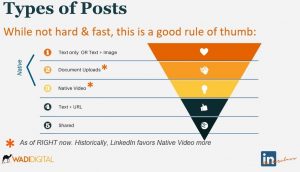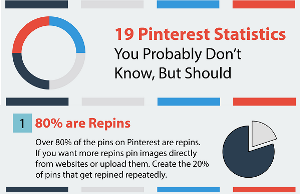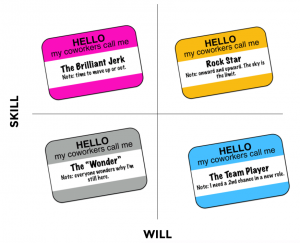YouTube’s relationship with its advertisers has had a rough year. In March of 2017, news broke that YouTube was hemorrhaging ad spend as businesses rushed to disassociate themselves from extremist content. Verizon, AT&T, Johnson and Johnson and Loreal were among the brands that jumped ship when they found their ads were being displayed at the beginning of videos with white supremacist or other offensive themes.
The effect of programmatic ad algorithms matching advertisers with inappropriate content wasn’t confined to YouTube: ‘This is a common problem across the industry,’ Jeff Liang, chief digital officer at Assembly, a New York-based media agency, told The Verge. ‘What we’re seeing with a company like YouTube also dealing with issues like this, is that it’s very difficult to manage these issues because they happen in real time.’
YouTube rushed to fix the problem – and stem the resulting flow of dollars – by more strictly policing content, leading to cries of censorship. Clumsy efforts to curb offensive content were often offensive themselves. ‘Restricted’ mode made some non-explicit LGBT content unavailable, for instance, protecting viewers from Nazis (and advertisers from being tainted by association with them) by banning Tegan and Sara.
In April, the company raised viewer and subscriber floors on channels that showed ads, and began hiring more people to sanity-check its ad-matching algorithms. By June, YouTube had decided that the offensive videos could stay, but ads would no longer be served on them. Advertisers wouldn’t be associated with brand-inappropriate content; firearm-wielding survivalists and potty-mouthed video games enthusiasts could exercise their rights. Everyone would be happy.
But early this year, there were signs that YouTube’s relationship with its content producers and advertisers still hadn’t settled down. It changed its partner program rules for the second time in nine months, raising viewer and subscriber floors from 10,000 views. The new rules require content creators to amass 1,000 subscribers and 4,000 hours of watch time in the last year as well as the 10,000 viewer floor.
In addition, every channel eligible for inclusion in the company’s Google Preferred program will be checked manually before being monetized.
The new rules were announced shortly after YouTube cut financial ties with popular vlogger Logan Paul after a string of offensive videos that included footage of a dead body, a skydiving accident and Logan tasering a rat. Paul is estimated to have lost between $ 40,000 and $ 200,000 a month from having his ad revenue cut off, though it hasn’t stopped him making videos – or using them to sell his line of products.
It’s not the first time YouTube has cut the ground out from under a content creator. But each time the platform attempts to deal with a Logan Paul – or a PewDiePie – by pivoting their rules or switching up their algorithm, smaller content creators and advertisers get crunched between the gears.
What’s important to understand is that creators who don’t hit the new numbers won’t just be excluded from Google Preferred: they won’t be able to make money on YouTube at all.
‘They really cater to the people who have the money, the views and the pull,’ says Erin Armstrong, a transgender vlogger and YouTube regular since 2006. ‘It’s less about creating and supporting the small communities that come together and share their experiences.’
Some businesses have lost their channels altogether, like casino streamers Letsgiveitaspin and CasinoDaddy. Their live streams went down, swiftly followed by their whole channels – despite CasinoDaddy boasting nearly 18,000 subscribers and over 10 million views. They were notified only after their channels had been banned and YouTube’s form email gave little indication of what they’d need to do to be reinstated.
Meanwhile, Logan Paul may be out of Preferred, but his viewer and subscriber numbers meant his videos were still being monetized until Google stepped in to manually strip him of all his ad revenue.
So it looks like Erin may have a point.
For advertisers and content creators, YouTube is an increasingly uncertain proposition. Does that mean businesses should give up on it altogether?
No. But businesses do need to look at how they can use YouTube.
YouTube still has massive reach; no other video platform comes close, Vimeo included.
And it’s still a massive search engine that’s owned by Google, and it’s still a gigantic social network as well.
Finally, it’s still free to host videos on.
So what should businesses do with it? Depends what you want to get.
If you’re a content creator or marketer…
YouTube is still a great option. You have to get found and offer great content, but you have several options for making money on the platform.
There are three main ways to make money on YouTube. You can make money from ads shown on your videos, you can sell stuff in your videos, and you can use your videos to drive traffic to a site where you sell stuff.
The first one we’ve already covered. If you have 1,000 subscribers, 10,000 views and 4,000 annual hours of watch-time, you can get a slice of YouTube’s ad action.
If you don’t see yourself hitting those numbers but ads are where your heart is, check out Facebook Watch. A new feature, Watch is primed to challenge YouTube in 2018 and it’s stepping into the market niche YouTube just vacated: small content creators. We don’t know how effective it’s going to be, and even a straight comparison of Facebook and YouTube’s existing video offerings is tough because each channel counts different metrics, so you wind up with apples and oranges.
(Oh, and Facebook chronically over-reports video views by counting autoplays.)
But the new feature is worth watching.
If you’re OK giving up on ads and stepping straight over to selling stuff in your videos, you can include links to sales pages in the video description or embed them in the video itself, and create whole sales funnels right on YouTube the way you would with static web pages by using in-video links. You can pitch and sell products directly in your videos or send traffic to your website.
However you’re doing it, if you’re doing it on YouTube you need to target your content to your viewers and optimize it, as we’ve spoken about above.
To use your YouTube presence to drive traffic, Neil Patel recommends a simple strategy: start your video with ‘ Hi, this is (your name) from (yoursite.com),’ and end it with, ‘Thank you so much for watching! If you’d like to see more about (topic), head over to (yoursite.com) for more free content.’
Might want to put your URL on screen too.
That way, you’re using YouTube as the top of a sales funnel, the rest of which can be on your site.
The bottom line? You won’t make money direct from YouTube itself if you’re under the requisite numbers. But it can still be a moneymaker for your business.
If you’re an advertiser…
You’ll probably be approaching YouTube with some trepidation. Huge reach aside, there have been too many upheavals, too little transparency. In fairness Alphabet has recognized this and published plans to create a three-tier system allowing advertisers to clearly state their idea of appropriate content, and clearly showing the effects of your choices on reach.
Belatedly, YouTube is foregrounding brand safety, and moving into partnership trusted vendors to offer it. ‘We’re currently in a beta with Integral Ad Science (IAS) and we’re planning to launch a beta with DoubleVerify soon. We are also exploring partnerships with OpenSlate, ComScore and Moat and look forward to scaling our third-party measurement offerings over the course of the year,’ the company said on its blog.
So if YouTube ads are a big part of your business, it makes sense to allocate some time to learning to use these new tools to better target your ads – always bearing in mind that we’ve had a new, improved YouTube before…
Conclusion
YouTube has made some big mistakes, and angered a lot of its community and its paying business customers. But it could still find an equilibrium that both are reasonably happy with. In the meantime, it’s still a viable channel for businesses that plan to use it for content, even if it’s getting tougher to monetize. And for advertisers? Wait and see.
Digital & Social Articles on Business 2 Community(67)
Report Post






